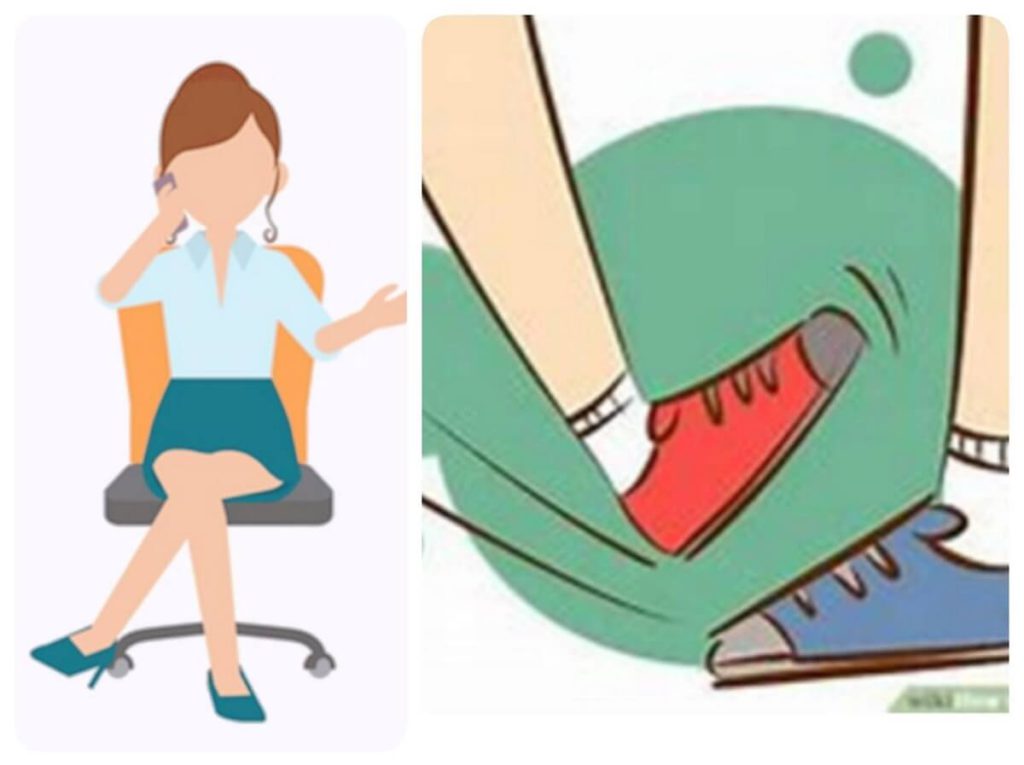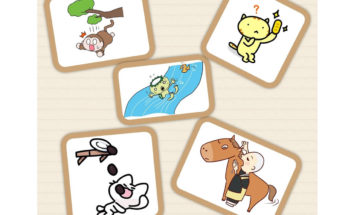When you ask Japanese people, “How many fingers do you have?” most people will answer 10 or, after some thought, proudly 20. This is surprising for English-speaking people, isn’t it? This is due to the difference in perception between Japanese- and English-speaking people. In this blog, I would like to introduce such differences between Japanese and English, specifically with regard to body parts.
If you are learning Japanese, you may know the words for these body parts.
hand → 手「て」(te)
arm → 腕「うで」(ude)
finger → 指「ゆび」(yubi)
foot → 足「あし」(ashi)
leg → 脚「あし」(ashi)
head → 頭「あたま」(atama)
face → 顔「かお」(kao)
neck→首「くび」(kubi)
back → 背中「せなか」(senaka)
Let’s go back to the topic of “fingers.” In the first place, Japanese people do not think of the thumb and other fingers as separate, as English-speaking people do. This is because each finger, including the toes, has its own name “yubi” (finger). That is why Japanese people answer “I have 20 fingers,” while English-speaking people answer, “I have 8” or “I have 10.” Likewise, did you know that the Japanese have three necks? The neck, wrist, and ankle are called “kubi,” “te-kubi,” and “ashi-kubi” respectively.

Once, when I took a bus in Hawaii, I saw this sign: “Keep your head and arms inside the window.” I felt a little weird when I saw it. In Japan, the sign says, “Don’t put your face or hands out the window.”

First of all, English speakers are likely to recognize that the head represents the area from the neck up and that the face is part of the head. Interestingly, however, Japanese people generally recognize the face and head as two different parts of the body. The head, so to speak, represents the place where hair grows. It makes sense that the English word “forehead” literally means the front of the head. In contrast, the Japanese word “odeko” or “hitai” (forehead) is just a part of the face.
I’d like to show you another example. When Japanese people are taking a bath with their children and say to them, “Wash your head,” does it sound strange? We can say, “Wash your hair,” but “Wash your head” is also a common expression in Japanese.

Let me give you a quiz. Can you guess what word fits the blank in the Japanese expression?
She shook her head. → She shook her ( ).

The answer is “neck.” She shook her neck. 彼女は首を横に振った。(kanojo wa kubi wo yoko ni futta)It means “she said no.” As you might guess, “she nodded her head” can be translated into “she nodded her neck.” 彼女は首を縦に振った。(kanojo wa kubi wo tate ni futta)
Let’s try a few more quizzes. Can you guess what the blank is?
Keep your nose out of it. → Keep your ( ① ) out of it.
He washed his hands of gambling. → He washed his ( ② ) of gambling.
I don’t like to be led by the nose. → I don’t like to be led by ( ③ ).
Let’s count noses to make sure everyone is here. → Let’s count ( ④ ) to make sure everyone is here.


The answers are ① neck ② feet ③ chin ④ heads
Suppose you are a yoga instructor and say to Japanese students, “Put your hands on your hips.” They might move differently than you expect. The word “hip” is also found in Japanese (hippu). However, when most Japanese hear the word “hip,” they think of the area around the buttocks. Considering that, how should you say it? You could say, “Put your hands on your ‘koshi’” (腰). But you may be confused because some people put their hands on their waists, while others touch slightly lower parts. “Koshi” generally refers to the area from the waist to the buttocks.


When a Japanese person says, “My ‘koshi’ hurts,” where do you think the pain is?
The answer is, “My lower back hurts.” “Back” is translated as “senaka” in Japanese, but there is a subtle difference. Japanese people generally think of “senaka” as the upper part.

Next, I would like to address the words referring to limbs. As mentioned earlier, the Japanese language has words that are equivalent to the English words for arm, hand, leg, and foot. However, the Japanese language does not use them as strictly as English does. Simply put, the hand includes the arm, and the foot includes the leg. For example, “spread out your arms” translates directly to “spread out your ‘ude’,” but it is also okay to say “spread your hands” (両手を広げる, ryou te wo hirogeru). When it comes to “foot” and “leg,” we use two different Chinese characters “足” and “脚,” but both words are pronounced “ashi,” and we generally use “足” for our body parts. In both of the following sentences, you can use “足” (ashi) in Japanese.
He was sitting on a chair with his “legs” crossed.
Somebody stepped on my “foot.”


All in all, these differences are more cultural than linguistic. They are also not definitive and will vary from person to person, even within the same country. So, why not enjoy discovering these differences in perception by interacting with people from all over the world?
Now, I’d like to introduce some Japanese idioms related to our body parts. Can you guess what these idioms mean from their literal translations?
| Japanese idioms | Literal meaning | Meaning |
| かおがひろい Kao ga hiroi | To have a wide face | To be widely known |
| めがない Me ga nai | To have no eyes | To have a weakness for something |
| めがたかい Me ga takai | To have tall eyes | To have an expert eye |
| みみがいたい Mimi ga itai | One’s ears hurt | To have something bad about oneself |
| はながたかい Hana ga takai | To have high nose | To be proud |
| はなでわらう Hana de warau | To laugh with the nose | To laugh scornfully |
| くちがかるい Kuchi ga karui | To have a light mouth | To be talkative To talk without thinking |
| うでをみがく Ude wo migaku | To polish one’s arm | To hone one’s skill |
| うでをあげる Ude wo ageru | To raise one’s arm | To improve one’s skill |
| むねがおどる Mune ga odoru | For one’s chest to dance | To be excited |
| はらがくろい Hara ga kuroi | One’s stomach is black | To be black-hearted |
| はらをくくる Hara wo kukuru | To tie one’s stomach | To be prepared for the worst To accept one’s fate |
| あしをひっぱる Ashi wo hipparu | To pull someone’s leg | To get in the way of one’s success |
| くびがとぶ Kubi ga tobu | One’s neck flies | To be fired |


Were you able to guess the correct meaning? There are many other idioms that use body parts as metaphors for a feeling or idea. Sometimes phrases we use casually are beyond imagination to people from different countries. Take “tie one’s stomach,” for example. One of the theories as to the origin of this phrase is that it derives from the act of a samurai going into battle retightening the sash of his armor and kimono. Before going into battle, armor and kimonos must be properly worn to avoid the risk of death. By tying the obi back on tightly, the samurai may have made up his mind to go to battle.
Finally, I will leave you with an interesting phrase that will make your eyes pop out of your head. It is “pan no mimi” (パンの耳), literally the “ears of the bread,” which actually refers to the crust.
Mastering a language is difficult. It is like pulling teeth. However, if you keep an open mind, it is fun to learn about culture by learning a language. Becoming aware of these different perceptions and expressions can be motivating and sometimes may blow your mind.
I hope this article helps spice up your Japanese.

Lives in Takatsuki city, Osaka. Has been engaged in English for work and fun for years.





 HTJ has a YouTube page! Check it out
HTJ has a YouTube page! Check it out